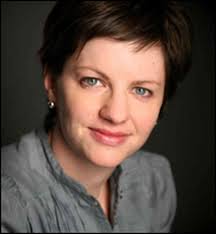The United States is not among the world’s highest-performing countries in public education. In fact, America’s K-12 students test average in science and reading and below average in math compared to the rest of the world.
Another hard fact to swallow — Americans spend more per student than anyone else in the world and have the smallest class sizes.
Those facts just didn’t add up for investigative journalist Amanda Ripley. She set out to solve the mystery.

“Even our most privileged kids score poorly against other kids in the world and we have really privileged kids,” Ripley said.
So why are children from other countries doing so much better in school?
She shared what she found with a crowd of 1,200 at Boise State University’s Taco Bell Arena Wednesday night. In attendance were some of Idaho’s most influential educators, including BSU President Bob Kustra and Linda Clark, superintendent of Meridian schools, Idaho’s largest district.
Before sharing her findings, spelled out in her best-selling book “The Smartest Kids in The World,” she said Americans are not getting worse. “But some countries are getting much smarter, much faster and it’s a generational shift that is playing out right now.”
She also said she found no evidence that spending or diversity or private or charter school systems affect student outcomes in dramatic ways.
To solve the mystery, she interviewed more than 100 exchange students from South Korea, Finland and Poland, and closely followed three American students implanted in those countries, where students perform at the highest levels in the world.
“Kids are education experts,” Ripley said. “They intimately know their classrooms, families and neighborhoods. They have strong opinions and they wish things were different.”
Poland, Finland and South Korea have similarities that Americans can learn from, but they also have differences.
Finland has the “Utopia Model.” Students manage to get remarkable outcomes without working 18 hours a day and freaking out about test scores and doing tons of homework, she said.
South Korea is the “Pressure Cooker Model.” The environment is much more grueling with a secondary school system repeated after hours. “Everyone in Korea complains about this model but it’s hard to disrupt because it’s so successful.”
Poland made recent, drastic changes out of great need. The country approved a sweeping array of reforms in 2000 in fear that their children were not competing for jobs. “All the reforms were controversial and still are, but the outcomes are something to behold,” Ripley said. “I didn’t see anything happening in Poland that couldn’t happen in Pennsylvania.”
Ripley concluded her hour-long talk with what the crowd most yearned for — what can Americans learn from Finland, South Korea and Poland.
- Esthetics. Schools were not fancy. Facilities were plain and simple, compared to American schools.
- Sports. Exchange students are “downright amazed” and how important sports are in America. In other countries, sports are almost never part of a school’s core mission. Sports are an after-school or weekend activity.
- Technology. Computers do not make learning happen, people do. U.S. schools have more technology than Poland, South Korea and Finland, but, said Ripley, “iPads are not a shortcut to learning.”
- Noise. American schools are noisy and it’s not about academics. The noise is all about extra-curricular activities.
- Focus. American schools lack focus. Poland, South Korea and Finland have clear, coherent targets that get higher with each grade level. “They have a set of clear standards. It’s a prerequisite to greatness. Ask any CEO of a high-performing company.”
- Rigor. Schools in America are just plain easier. “We are not asking our kids to work at the level they are capable of and it’s kids that keep telling me that. We systematically underestimate what kids can do.”
- Education colleges. Finland has the best-educated teachers in the world and “everybody knows it,” she said. It is as hard to get into an education college in Finland as it is to get into MIT in America. “We educate twice as many teachers as we need and most teachers complain they are undertrained.”
- Equity. Countries with high-performing systems have decided that the kids with the most needs get the most experienced teachers. Therefore, low-income kids outperform expectations.
“It’s not easy,” said Ripley of education reform. “But I’m telling you, it’s not impossible.”
Disclosure: The J.A. and Kathryn Albertson Foundation and Boise State University were two of the co-sponsors of Ripley’s speech. The Albertson Foundation funds Idaho Education News, which is housed under the Idaho Leads Project at BSU.
